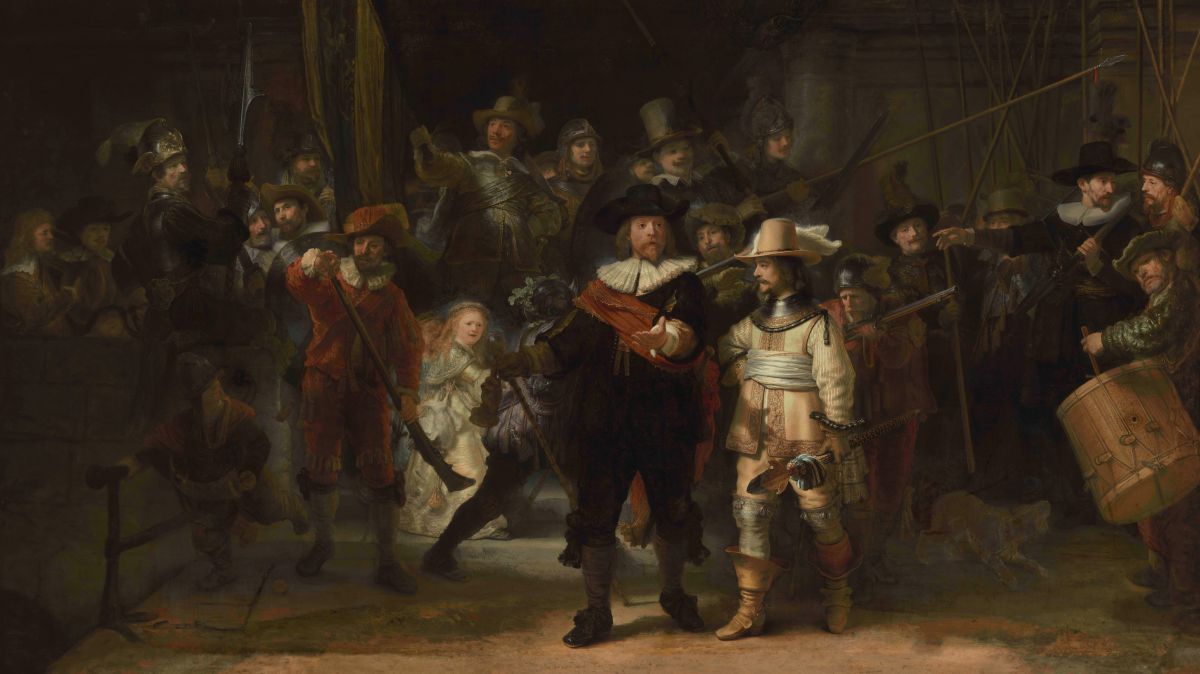Rembrandt’s masterpiece The Night Watch is full of dramatic postures, and one figure that brings the scene to life is the agitation of a small, excited barking dog.
The dog, now faded and hidden in shadows near a militia drummer, was a ghostly presence in the right of the painting.
Its origins had never been identified, until a chance discovery by a Rijksmuseum curator spotted the animal in another artist’s work.
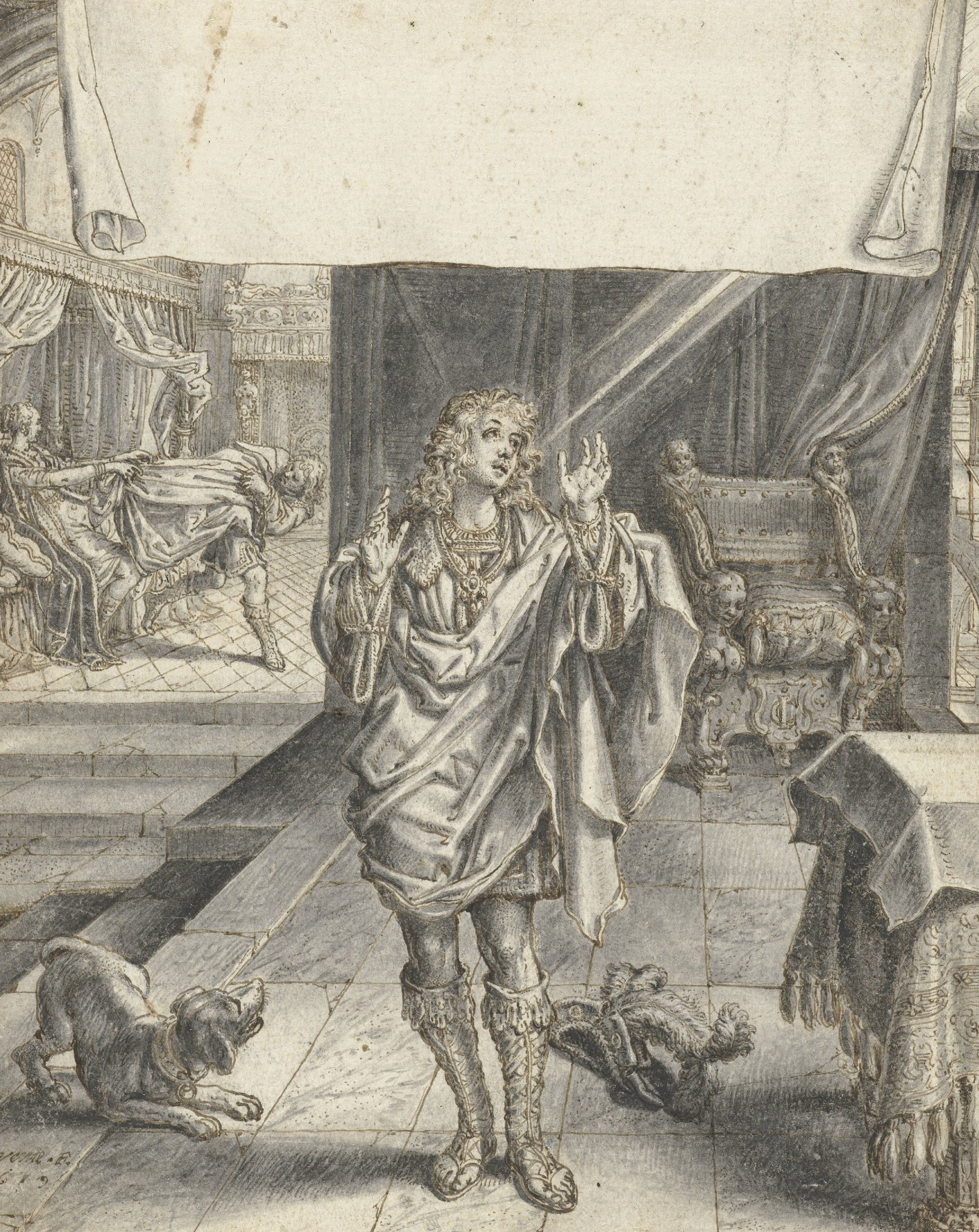
The inspiration for Rembrandt’s depiction is thought to have come from a drawing by Adriaen van de Venne
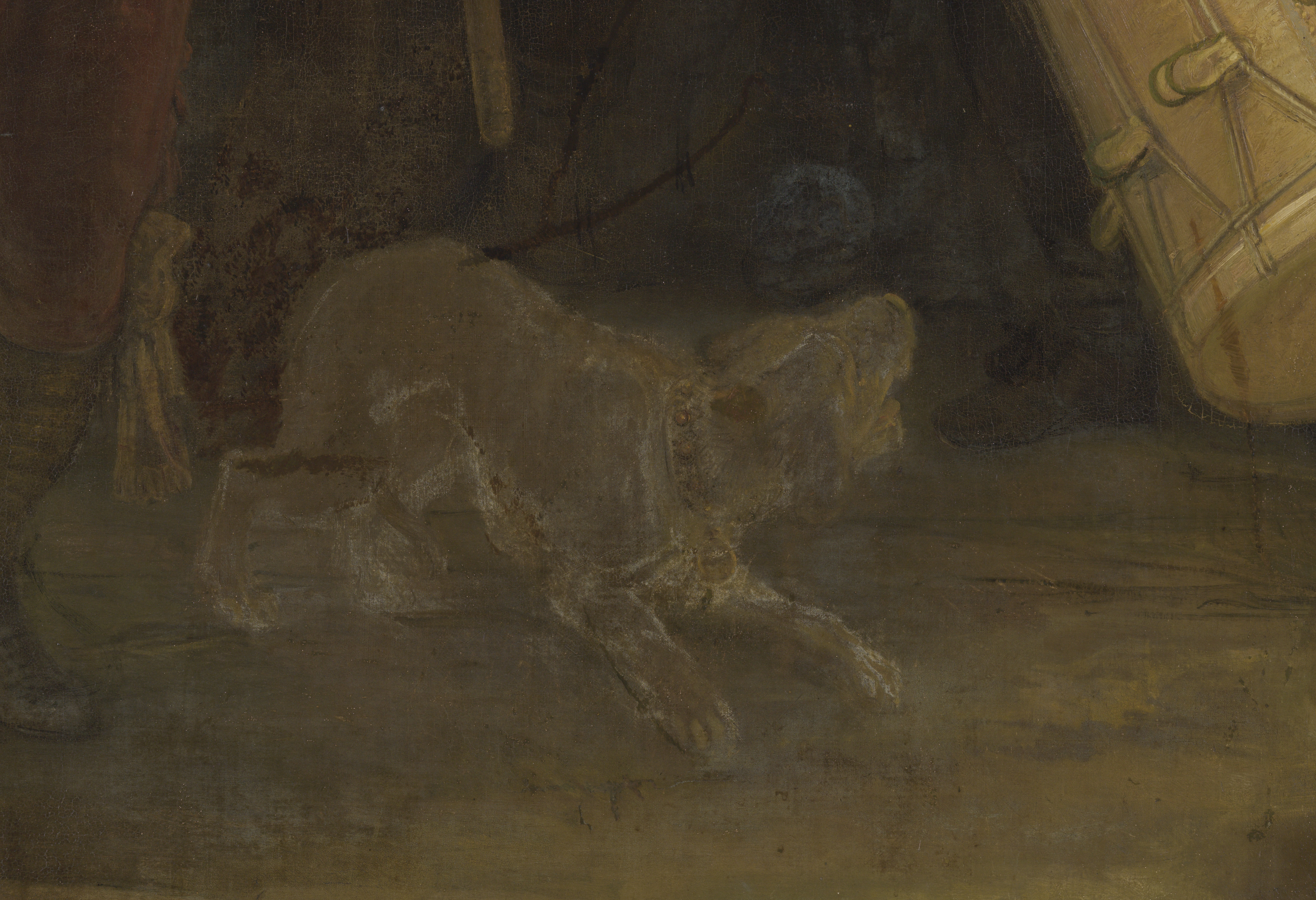
Rembrandt’s dog, which has a very similar pose to Van de Venne’s
Anne Lenders, the curator of Operation Night Watch, the project to restore the work at the national museum in Amsterdam, was stunned to make the connection while visiting an exhibition of the works of Adriaen van de Venne (1590–1662), another 17th-century Dutch artist.
“My eyes fell on it, in the catalogue of the exhibition and then I saw it. I immediately thought of the dog in The Night Watch. I grabbed my phone to compare it,” she told the Times. “I just kept staring at it and looking again and looking again. Am I really seeing this?”
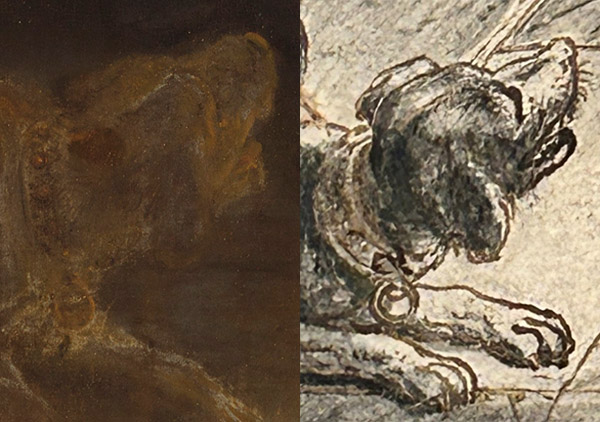
Rembrandt’s dog next to Van de Venne’s
She was looking at a 1619 drawing by Van de Venne, depicting the temptation of Joseph by Potiphar’s wife — which featured a collared hunting dog in a pose she recognised from Rembrandt’s masterpiece, painted some 23 years later.
The drawing had been hidden in the Rijksmuseum’s own collection for more than one hundred years, but no one had previously made the connection. Rembrandt (1606-69) was known to have been inspired by Van de Venne, as he painted his own version of Joseph Accused by Potiphar’s Wife in 1655, which borrowed from the older artist.
• Rembrandt’s old mastery of the brush revealed with high-tech photo
The Night Watch (1642) depicts Amsterdam’s city watch, or militia, as a potent symbol of a new civic and national pride rooted in a republican democratic order that was the Dutch “golden age” of trade and art.
Rembrandt was the first to paint modern figures, depicting ordinary people rather than the nobility. He kept them at the centre of a portrait, showing them in a martial and heroic way, with the barking canine — resembling a spaniel or other breed of hunting dog — adding to the moment of high drama.
Lenders said: “The dog plays a really crucial role because the captain is giving the command that the company has to start marching. The drummer beats his drum and the dog reacts and starts barking. So you really have this suggestion of noise and movement. The dog really heightens the liveliness of the painting and the drama.”
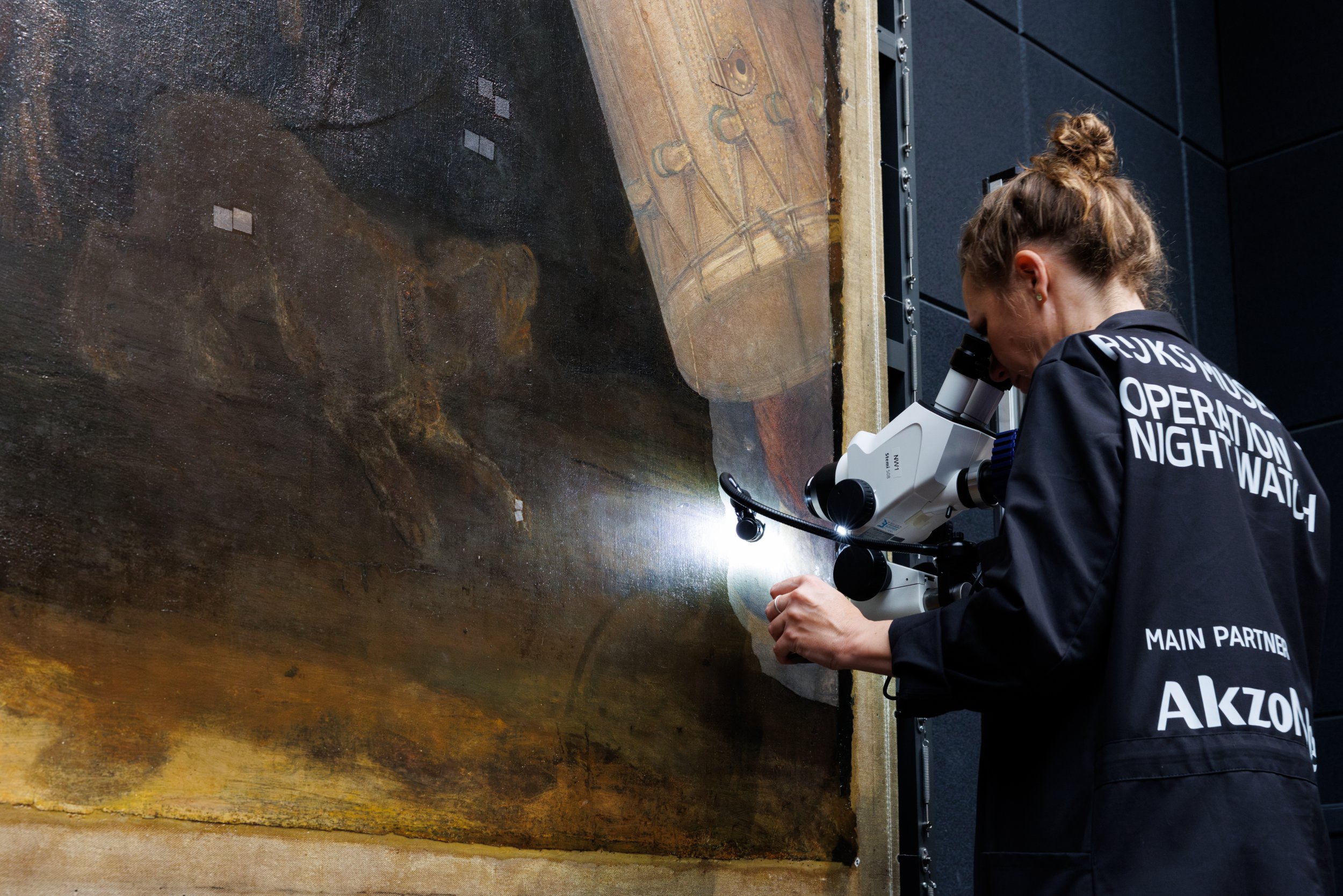
A conservator works to restore the piece
The dog’s breed has not been confirmed, but at least one expert has suggested that it could be a forerunner of the modern basset fauve de Bretagne, a short-legged hunting dog.
The hound’s appearance has long been surrounded by mystery due to its ghostly whitish appearance which was revealed by x-rays in 2021 to be due to Rembrandt’s use of paint rich in chalk for preparatory sketches.
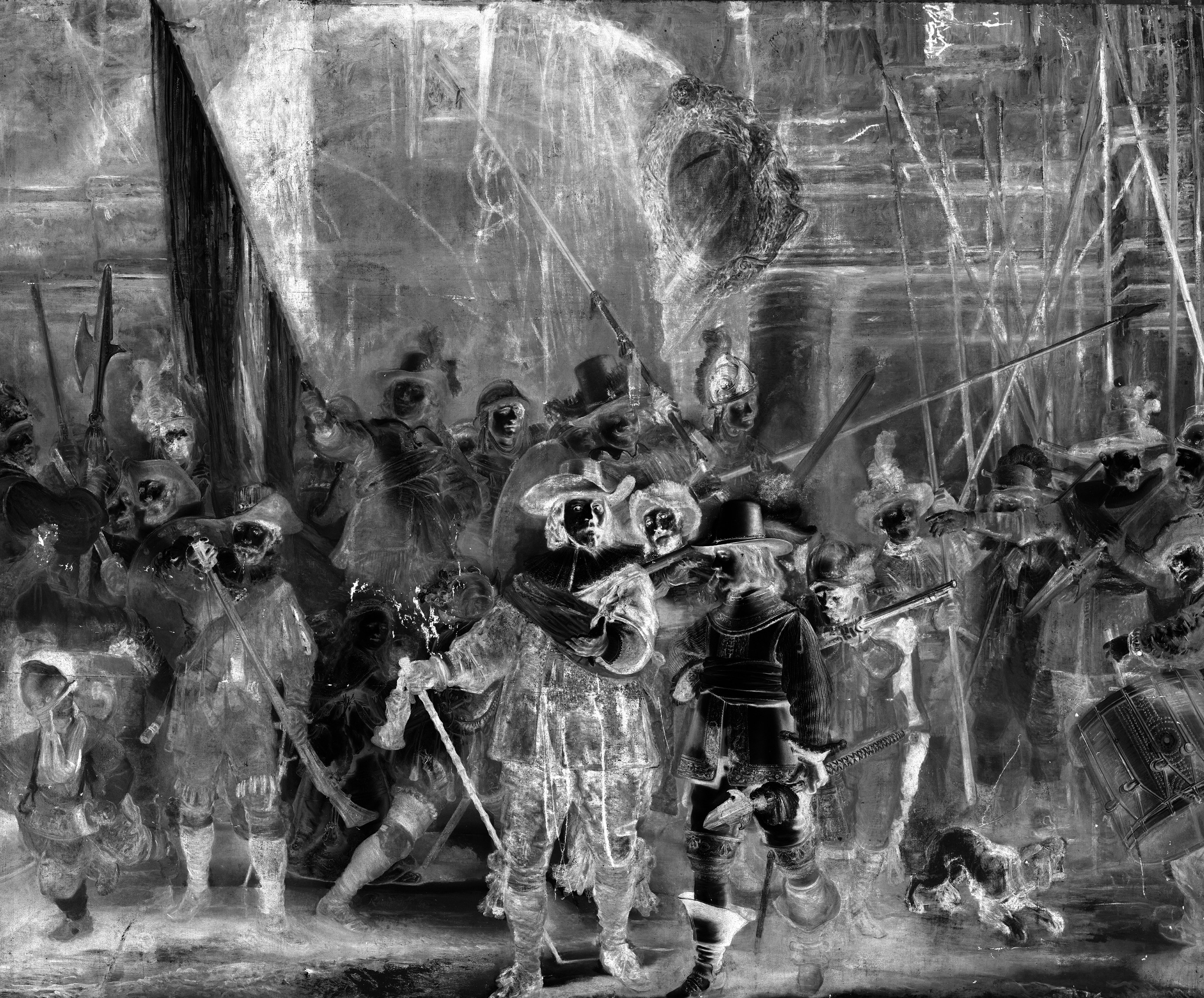
Imaging technology in 2021 allowed the painting to be seen in greater detail
Work for Operation Night Watch resulted in a detailed digital image that can be viewed on the museum’s website
New imaging techniques and computer technology mapped the painting and showed how the Dutch master plotted his work on the canvas almost 380 years ago, frequently changing his mind as the huge composition grew.
One such revelation was that the dog was initially depicted by Rembrandt with its right front leg more bent and the chest closer to the ground, making it even more similar to Van de Venne’s original drawing.
It is an exciting revelation for a painting which has become a Dutch national symbol. Taco Dibbits, the director of the Rijksmuseum said: “It is remarkable that new discoveries are still being made about one of the most studied paintings in the world.”
A restoration of The Night Watch is under way but in future the curators plan to remove varnish from the section containing the dog, to help restore it to its former glory.

